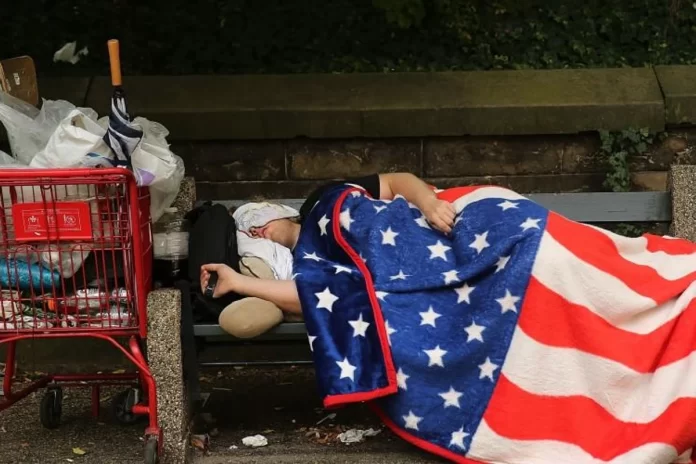A notable proportion of Indian Americans, despite their reputation for success, confront financial hardship, with over 2.3 million individuals living below the poverty line
In the global imagination, the United States often symbolizes the ‘American Dream,’ a beacon of opportunity and prosperity. However, a closer examination of the Indian American community reveals a more nuanced narrative. Contrary to popular perception, a significant portion of Indian Americans grapple with poverty, challenging the prevailing stereotype of universal success.
A recent study conducted by the Pew Research Center illuminates the socioeconomic landscape of Indian Americans in the US. Surprisingly, a notable proportion of Indian Americans, despite their reputation for success, confront financial hardship, with over 2.3 million individuals living below the poverty line.
While Indian Americans exhibit a lower poverty rate of 6% compared to other Asian American groups, such as Burmese and Hmong Americans, who face rates as high as 19% and 17% respectively, these disparities underscore the multifaceted nature of economic status within the Indian American population.
Education emerges as a pivotal determinant of poverty among Indian Americans. Strikingly, one-third of Indian Americans in poverty hold a bachelor’s degree, challenging conventional wisdom regarding the link between education and economic stability. Conversely, higher educational attainment serves as a protective factor, with only 5% of Indian Americans with a bachelor’s degree experiencing poverty compared to 13% with lower education levels.
Language proficiency also presents a significant barrier for impoverished Indian Americans, with many lacking fluency in English. Among Indian immigrants living below the poverty line, a mere 44% demonstrate proficiency in English, impeding access to opportunities and resources.
As policymakers and advocates strive for equity and opportunity, addressing these disparities is essential for fostering a more inclusive and just society
The concentration of poverty within specific urban centers further accentuates the challenges faced by Indian Americans. Cities like New York, Los Angeles, and San Francisco are home to over half a million Indian Americans struggling to make ends meet. Even in smaller cities like Fresno and Buffalo, high poverty rates persist within Indian American communities.
Financial insecurity pervades the lives of Indian Americans in poverty, with a staggering 79% encountering financial difficulties in the past year. From an inability to save for emergencies to reliance on food banks, these individuals navigate a precarious financial landscape, divergent from the idealized ‘American Dream.’
Furthermore, access to government aid varies based on immigrants’ reasons for migrating to the US, revealing systemic disparities in support systems. While perceptions of the American Dream vary among Indian Americans, a sense of optimism persists, with many believing in the possibility of achieving it despite obstacles.
Ultimately, the plight of Indian Americans living in poverty challenges prevailing notions of the ‘American Dream,’ prompting a reevaluation of socioeconomic inequalities within the Indian American community. As policymakers and advocates strive for equity and opportunity, addressing these disparities is essential for fostering a more inclusive and just society.
***********************************************************************
Readers



